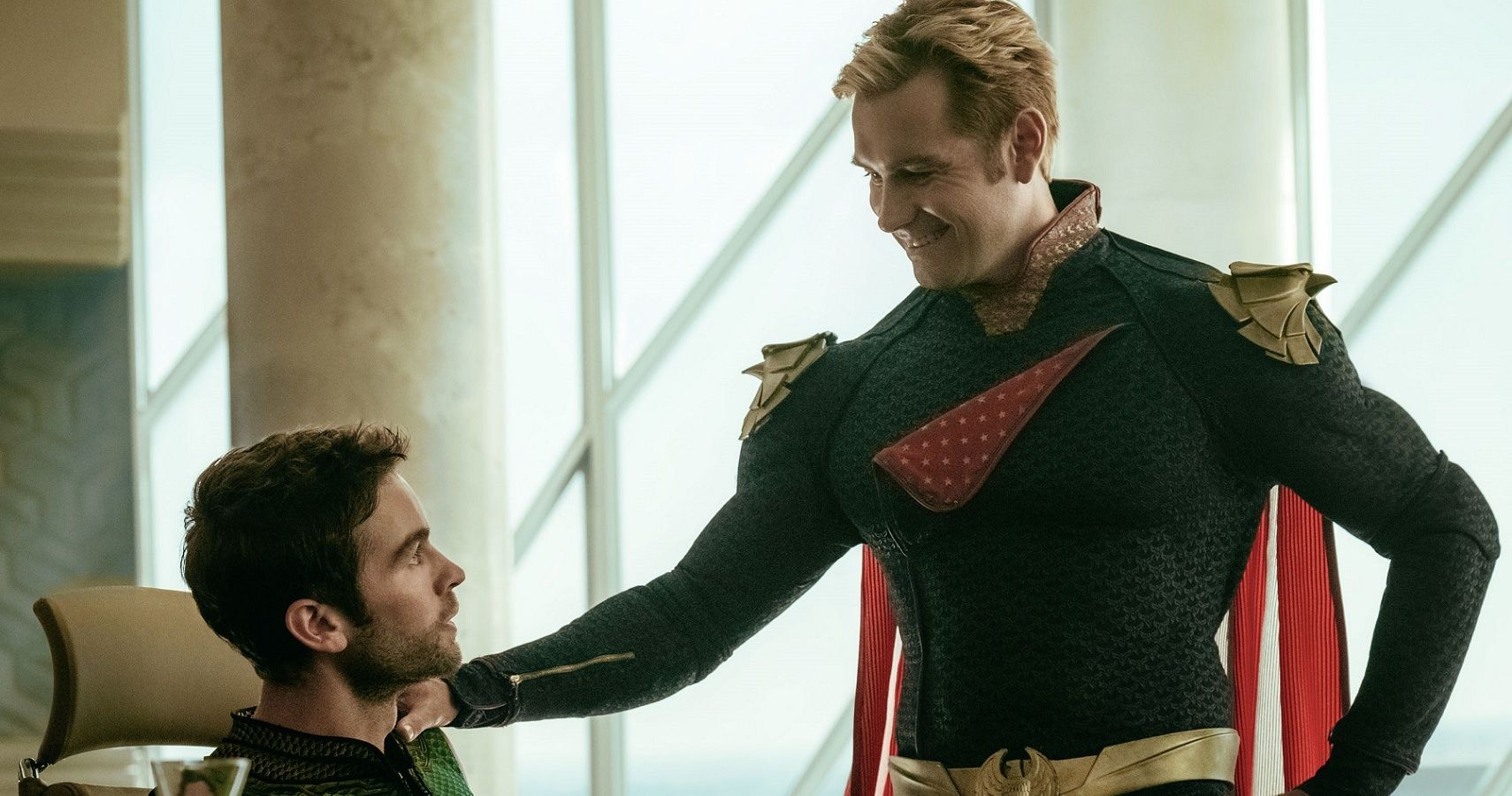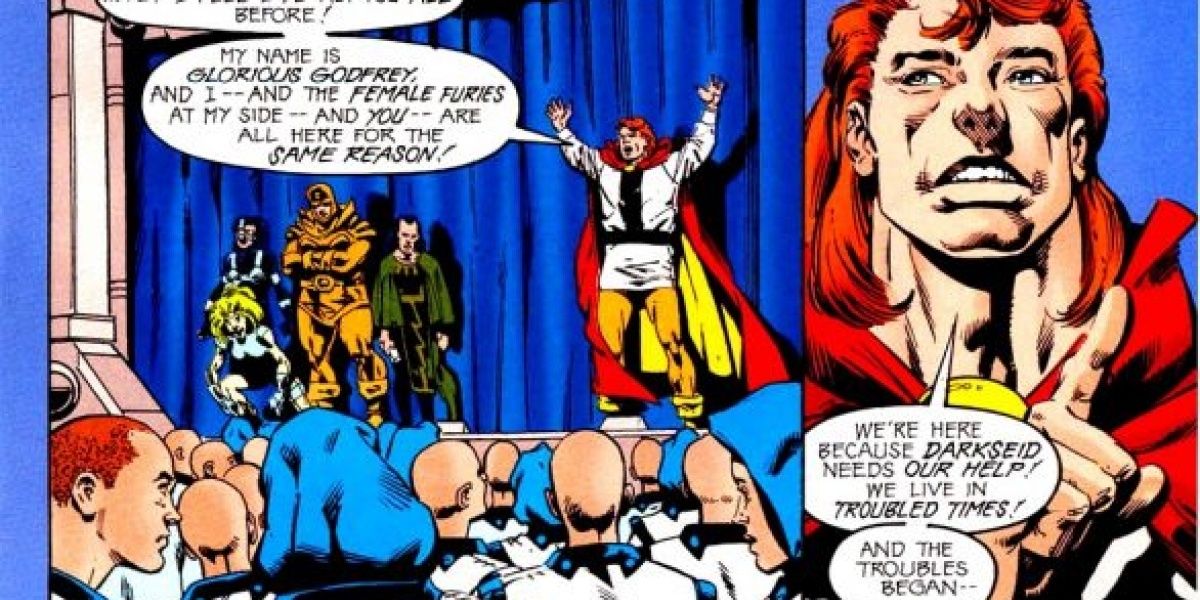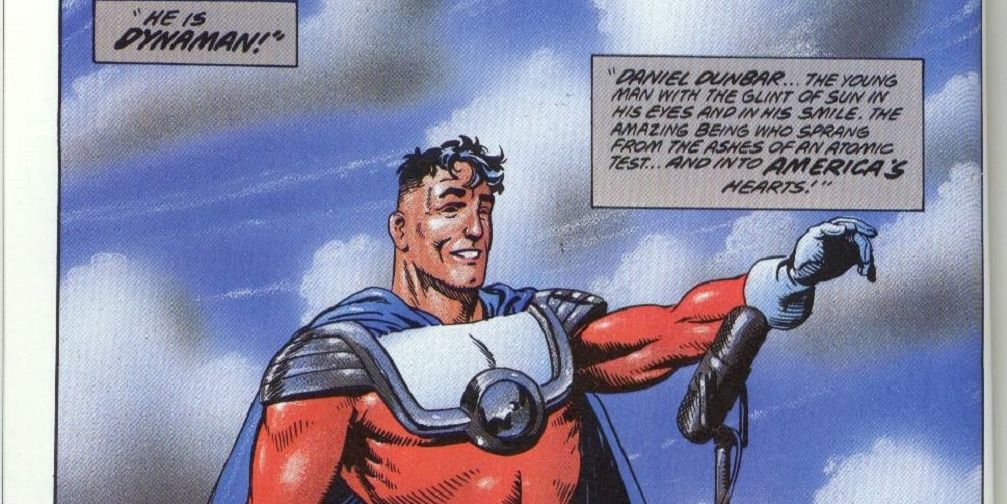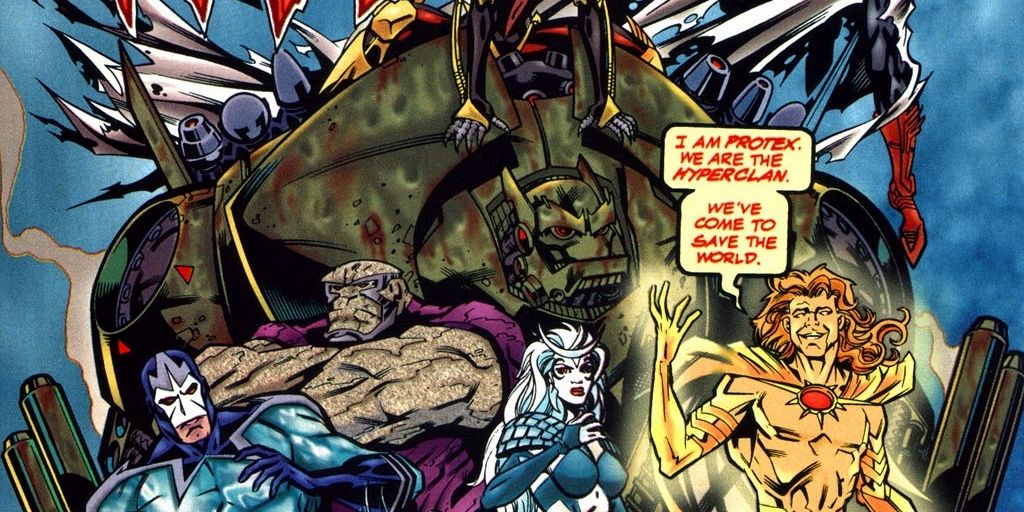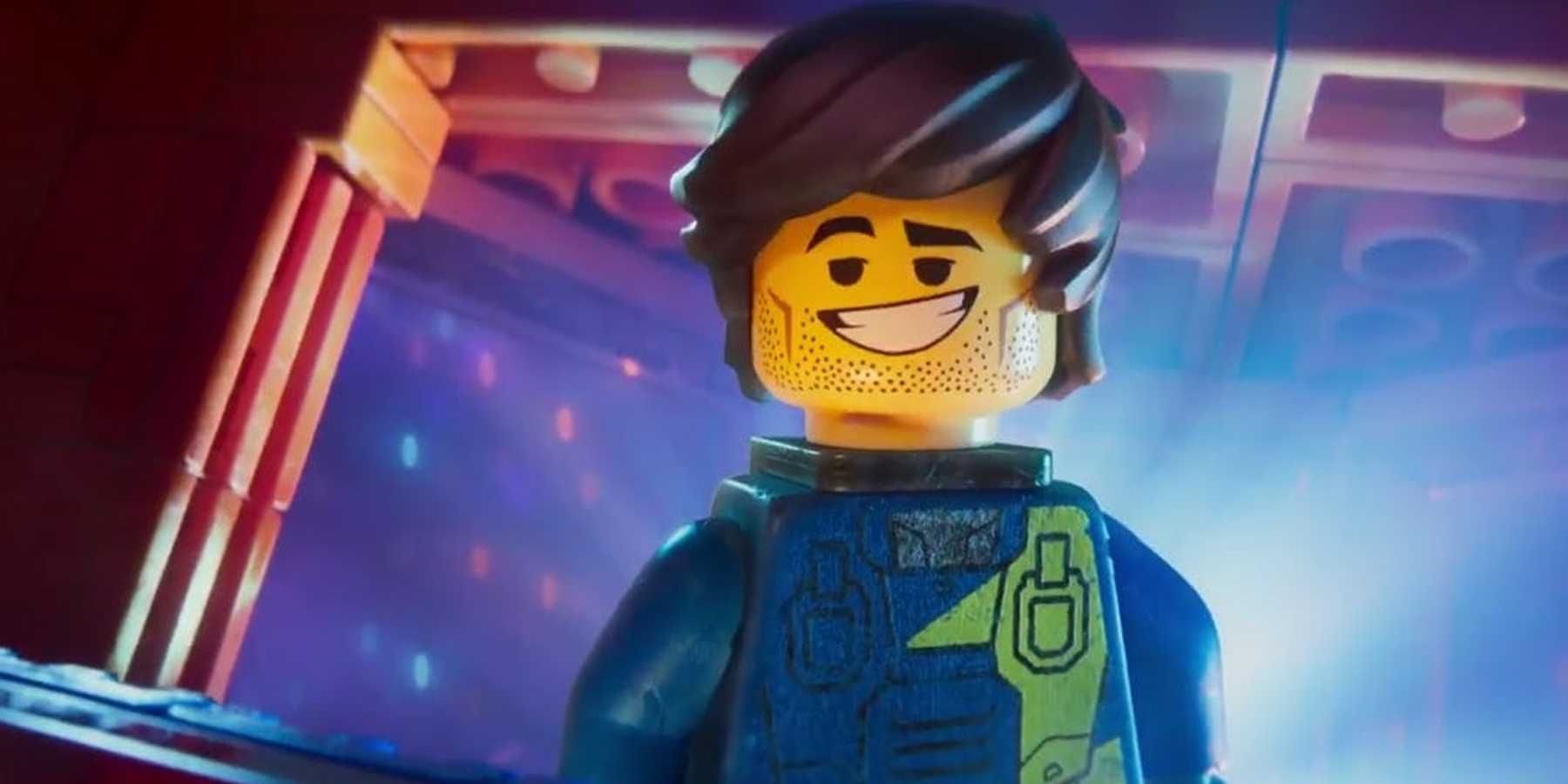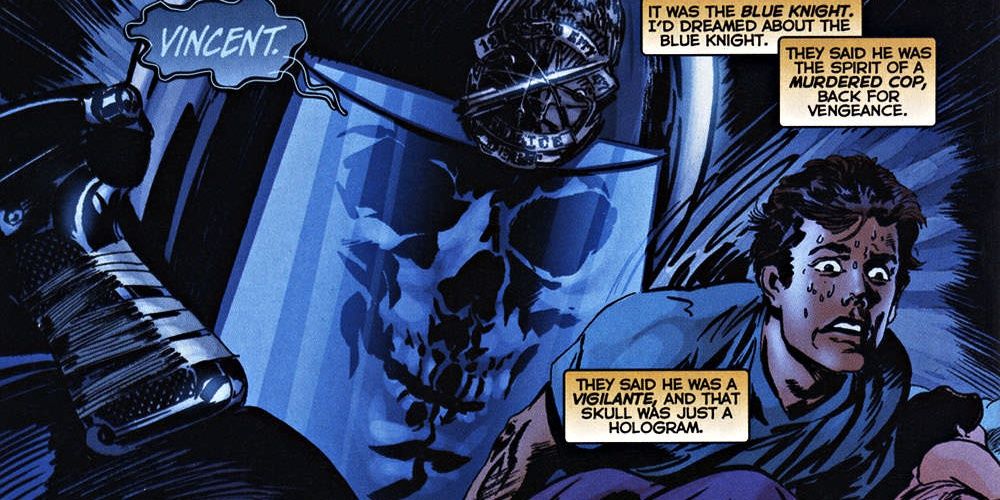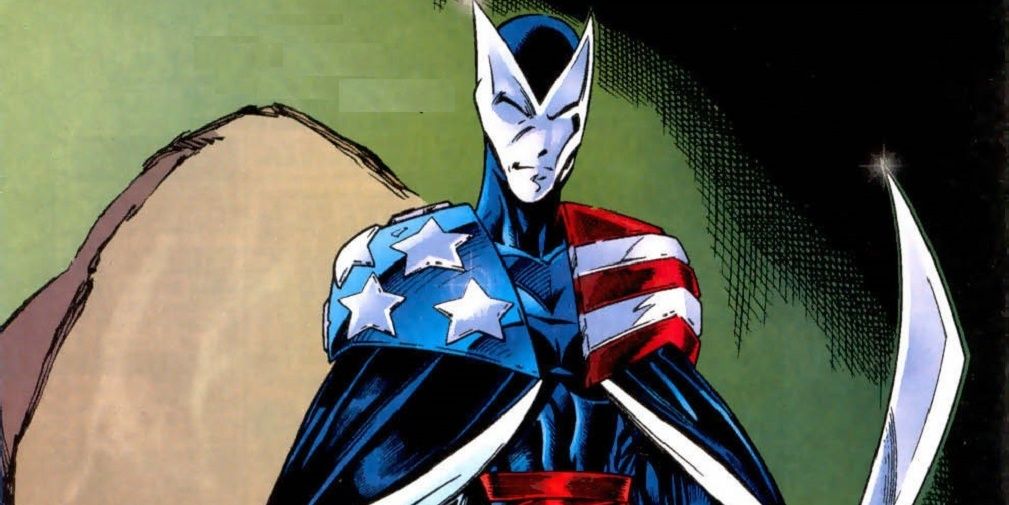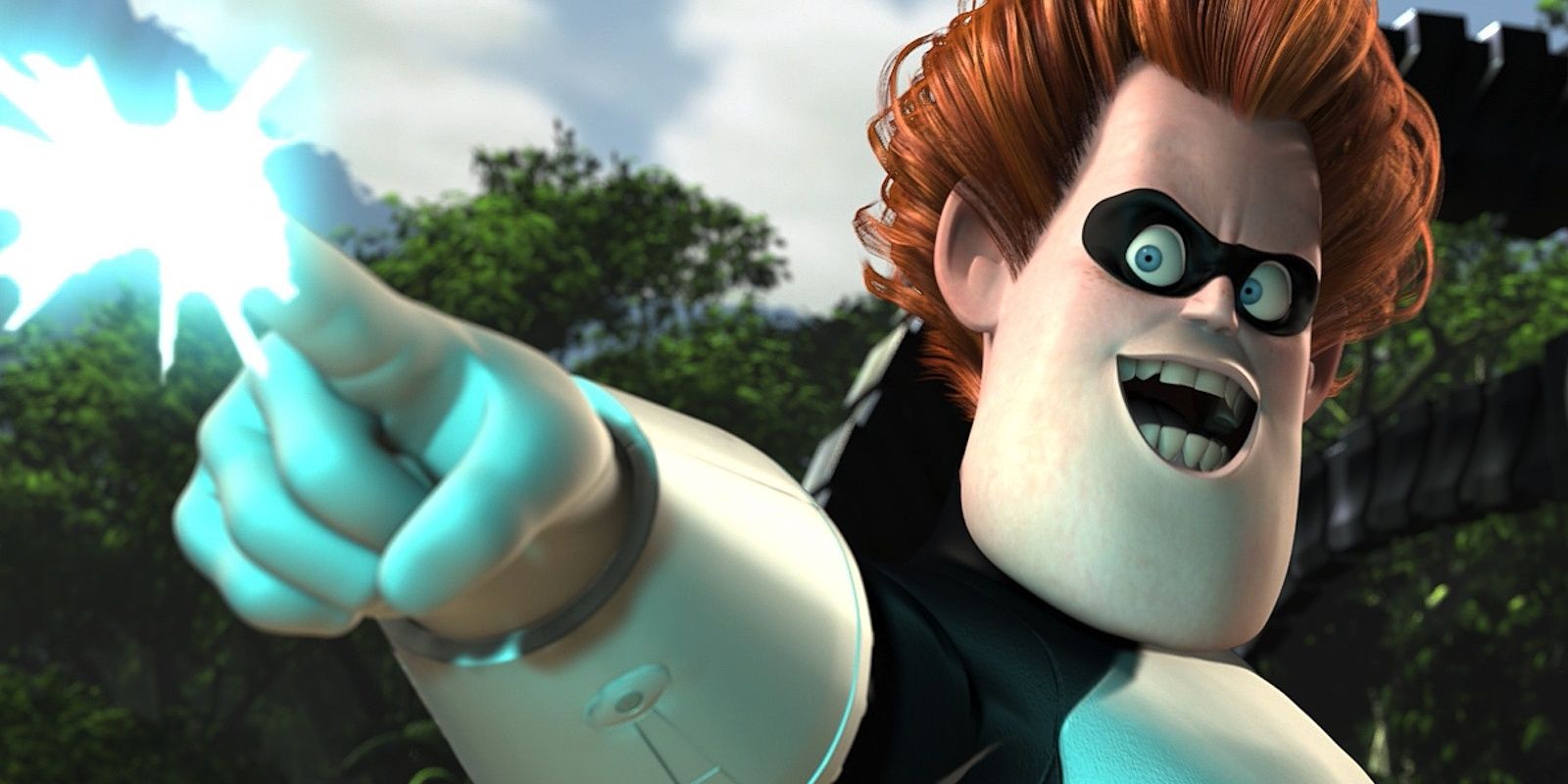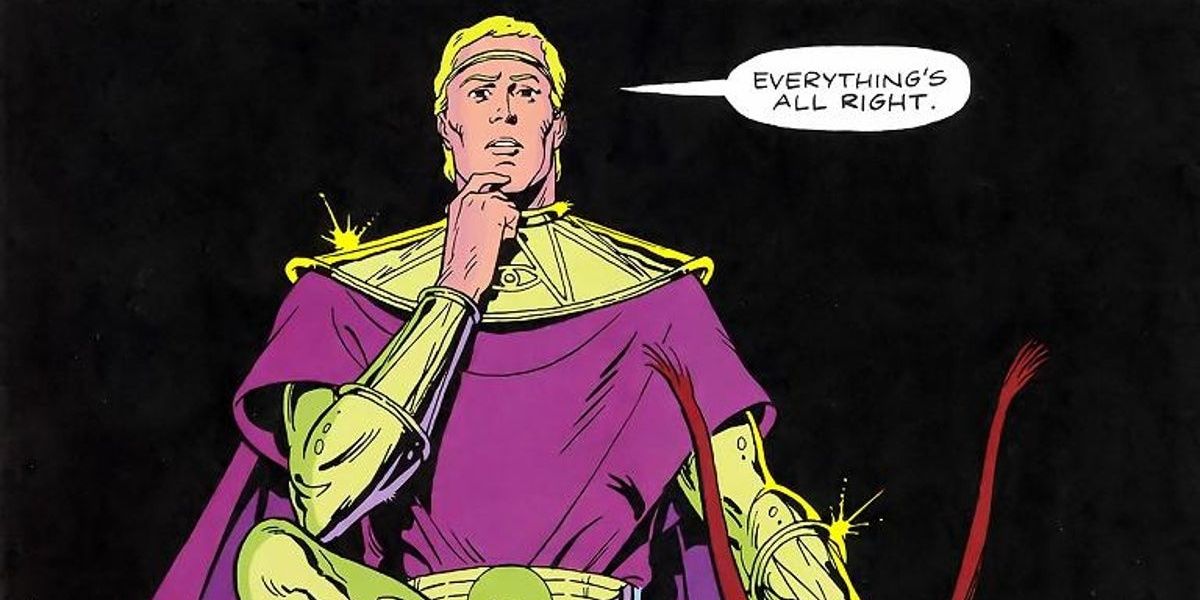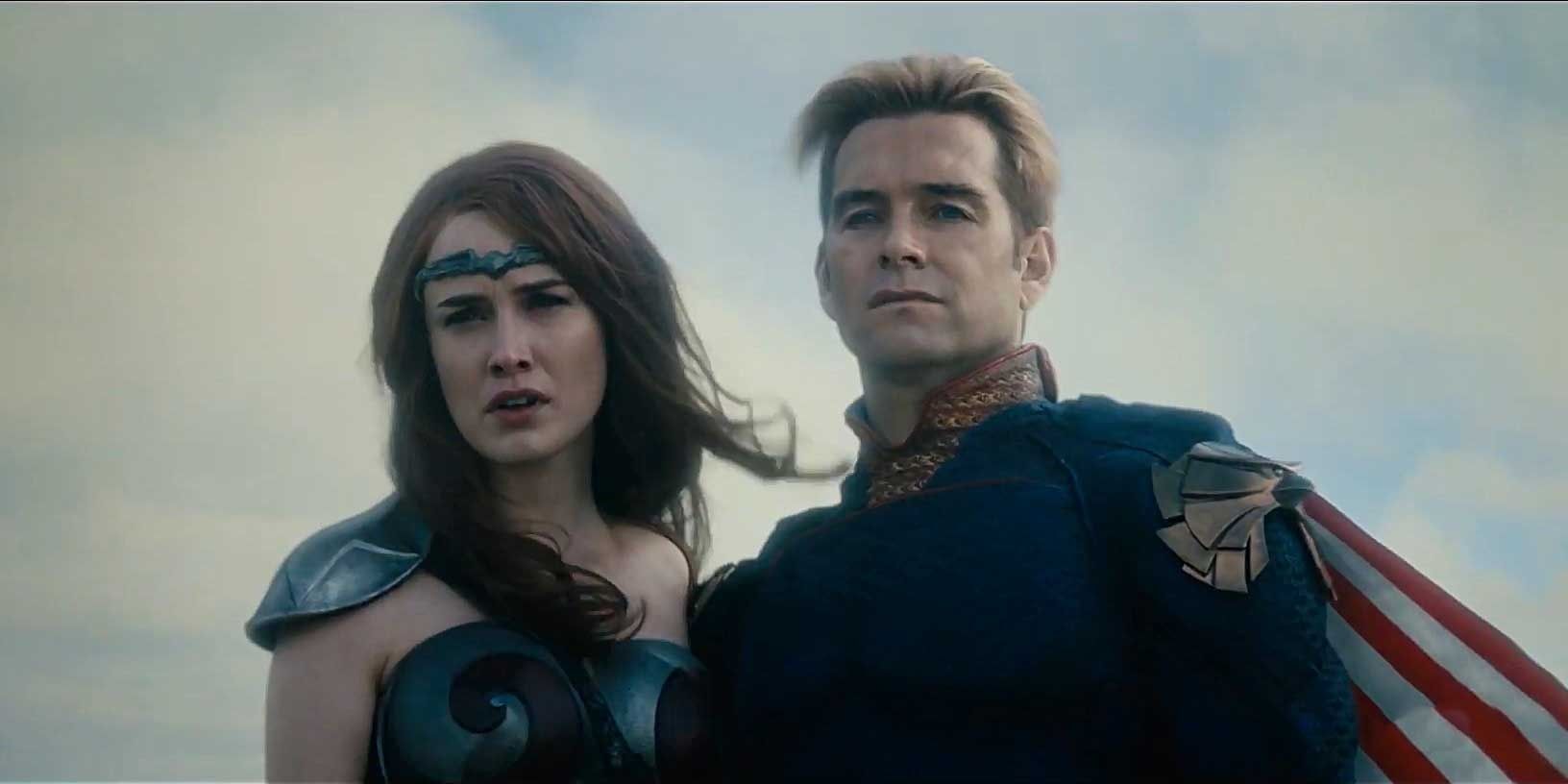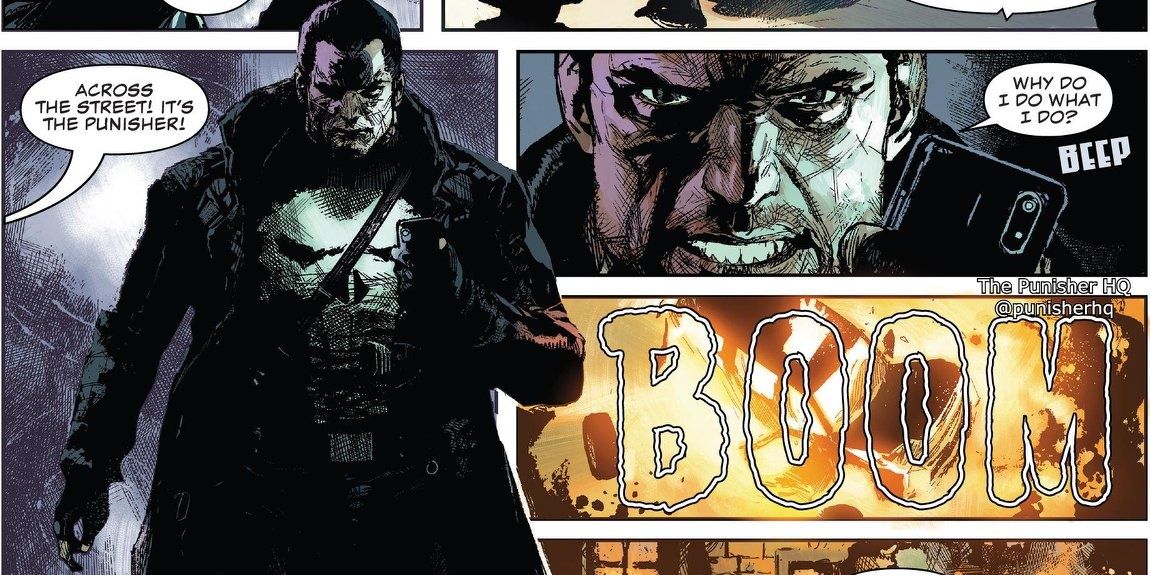Superhero comics are carefully visually coded. After reading a few, you know what heroes are supposed to look like. They're handsome or beautiful, they sport bright primary colors, they talk about things like "justice" and "freedom." They have fantastic hair.
The problem is this code is easily imitated and co-opted. Plenty of villains operate with the understanding that, as long as they look heroic from a distance, they can get away with anything. There are plenty of examples of cynical antiheroes that employ this strategy, too-- Booster Gold's original plan was to look heroic and get rich. However, there's a lot of distance between an antihero and a monster.
10 Glorious Godfrey
Created in 1971, Glorious Godfrey may be Jack Kirby's greatest satirical character. With a hero's cape, rhetoric, and good hair (for the 80s), this Apokalyptan New God sometimes masquerades a mortal newscaster or TV host. His job is simple: to build the cult of Darkseid throughout the universe. Godfrey's not very strong for a god, but his super charisma more than makes up for it. He favors Nuremberg style rallies, where he inducts new followers into his cult, The Justifiers. A heroic sounding name, it comes from the fact that Godfrey can justify anything.
Godfrey has made appearances in a wide range of DC-related media. He's had a high-profile role on the animated Young Justice as newscaster G. Gordon Godfrey, hero-hater and talk show host. If any villain predicted the rise of pundit-driven politics, it's Godfrey.
9 Dynaman
Originally known as "Dan, the Dyno-Mite," Dynaman's meteoric rise is chronicled in James Robinson's seminal graphic novel The Golden Age. Following WW2, Dynaman was gifted with nuclear powers by (apparently) American scientists. A gifted speaker as well as a Superman analog, he looked to be the next leader of not just Golden Age heroes like the original Green Lantern and Liberty Belle, but the entire free world. Unfortunately, everything Dan seemed to be was a lie.
The only reason this promising character isn't closer to #1 on this list is a cliched third-act-twist. The other heroes started to suspect Dynaman, which is fine. It's the revelation that he's LITERALLY HITLER that undermines the concept and gives this story a cartoonish feel. Except for that, though, A+ for execution.
8 Hyperclan
The first nemeses the Justice League faced in Grant Morrison's 1997-2000 run on JLA, the Hyperclan were a group of superhumans who promised to out-hero the JLA. They didn't just fight crime, they brought rain to deserts, food to the starving, and promised to unite the world under their benevolent guidance. And, you know, replace the Justice League.
It made no sense for heroes this powerful to arrive from nowhere. Sure enough, they were from, um, Mars. A group of Pale Martians, the group used their innate Martian shapeshifting powers to both appear human and cover up their weakness to fire. Once Batman cracked the code they were as good as cooked, but their cynical ploy taught humanity not to trust heroes who seem too good to be true. It's a good lesson, as long as it doesn't paralyze you, or tempt you into making promises you can't keep.
7 Rex Dangervest
Surprise villains have been a feature of children's movies since Frozen, but no one wears it better than LEGO Movie 2's shockingly dark villain, Rex. He bursts into the film backed by sick guitar riffs and acting like what an adolescent boy thinks a hero is. He's handsome, good at everything, trains dinosaurs, voiced by Chris Pratt, and his ULTIMATE power is breaking things! However, Rex is, in fact, working to doom multiple worlds to the Land of Stor-Age, and also traumatize his past self (Emmet) into becoming a monster (himself). Heroes sacrifice themselves for others, and for all of his rad-dude trappings, Rex only knows how to obsessively think about himself.
6 Blue Knight
We know from experience, in a crisis, there's no one better to see than a police officer. That's what makes the Blue Knight insidious. After his son's tragic death, Officer Josh Stone built this super vigilante persona out of the Astro City PD's unused high-tech equipment. The result is a man masquerading as a murdered policeman's ghost. He's relentless, seemingly able to track down suspects over any distance and period of time, and creates the fear he intended... you know, like a terrorist? Unsurprisingly, a policeman gunning suspects down in the street doesn't make anything better. In fact, it makes people trust their police a lot less, and the actual vengeful ghost who shows up later doesn't help, either.
5 Citizen V
When Baron Helmut Zemo, neo-Nazi scientist, and supervillain, secretly formed The Thunderbolts it was a masterstroke. Recasting the former Masters of Evil, he took on the persona of the patriotic American hero Citizen V. Everything about his team was calculated to please the public and the media alike. He even chose the name Thunderbolts because it was "cryptofascist but friendly." While various members of the Thunderbolts turned out to have buried heroic impulses, Zemo himself has had only one goal: gaining the world's trust, then conquering it. His preferred method of mind control is monstrous enough (Imperius Curse, anyone?), but he's happy to murder anyone that opposes him as well.
4 Syndrome
Another extremely nasty monster from a kid's movie! For a character whose raison d'etre is out-heroing Mister Incredible, Syndrome made some questionable costume choices. His black-and-white unitard is sinister, and what his mask does to his eyes is worse. Even so, looking like a hero-- the world's only hero-- is Syndrome's entire plan. The secret part is, of course, not only that he created the giant robot that endangered millions of lives, but that he's a serial killer. Whatever Buddy's alleged research motives, he systematically stalked and killed dozens of superheroes, luring them into the terrifying, ironic deaths.
3 Ozymandius
Syndrome endangered millions of lives. Ozymandius ended them. Of course, any hero who dresses in purple-and-gold like a king shouldn't be trusted. Even so, it was an enormous shock to discover that melancholy bleeding-heart Adrian Veidt had murdered over 3 million people at the climax of the original Watchmen. Despite his protests, killing is work clearly he enjoyed.
Veidt not only kicked off the graphic novel's plot by executing The Comedian-- a monster in his own right-- but he killed all of the scientists and creators that could have exposed the origins of his psychic-monster-squid attack on NYC. Veidt even killed his servants at the North Pole, an idea that's been echoed in his mass slaughter of his servants in the HBO Watchmen series. Oh yeah, and he gave Moloch freaking cancer, just because the old man might have figured something out.
2 Homelander
In both the Garth Ennis-written comic series and Amazon Prime's The Boys, Homelander is the poster boy for this list. His Superman/Captain America mashup is the perfect synthesis of a heroic look. Of course, he's a psychopath, but he's a surprisingly nuanced character as well. Raised in a lab without love or human contact, it's no wonder he turned out to be a rapist and murderer. That doesn't absolve anything, though, and the most striking thing about Homelander is that he almost always believes he's doing the right thing for God, country, and corporation.
1 The Punisher
Frank Castle is a tricky one. All his iconography-- skulls and black leather-- screams "villain," but he's been widely regarded as an antihero for decades. Don't let the hype fool you.
The Punisher first appeared as a hitman, hired to murder Spider-Man. He's spent the succeeding decades in his "war on crime," wielding guns and explosives in the crowded city of New York. At best a serial killer who preys on criminals, unlike Dexter he uses weapons that are bound to inflict collateral damage. Bullets from a high-caliber rifle don't stop when they hit a body. They pass through walls, floors, cradles, schools. Given his "Bruce Wayne meets Charles Bronson" origin story-- his family was gunned down in a mob war's crossfire-- you'd think he'd show a little restraint and try to spare other people's families. No, Frank, rocket launchers and fragmentation grenades in a crowded urban setting are not "restraint." A story about the families Castle unthinkingly destroyed is long overdue.

